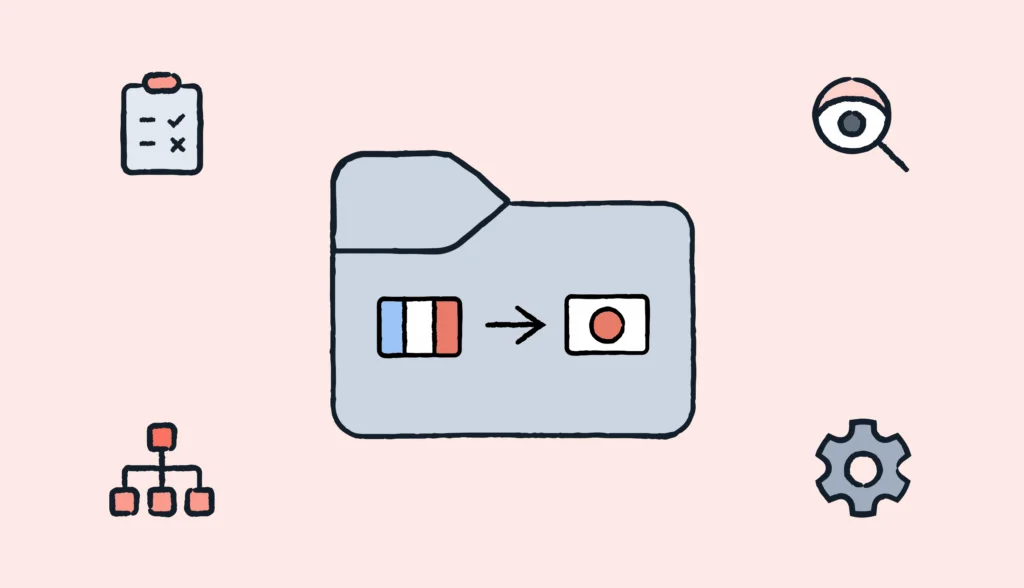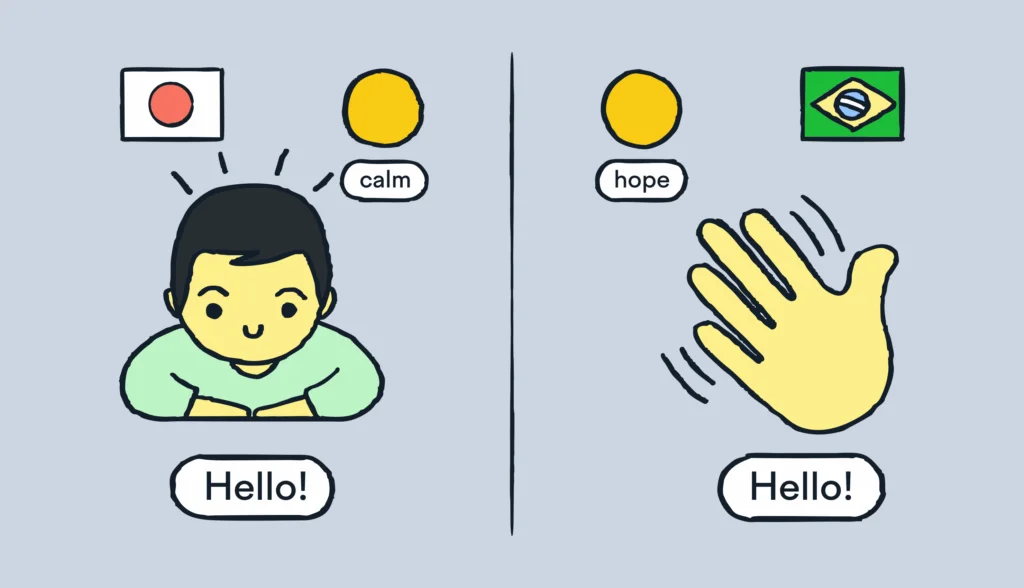The secret weapon for any professional translator? Translation memory software. What is translation memory, exactly? It’s become vital for translation and localization teams, and for good reasons.
Translation memory software helps you to:
- Speed up the translation process
- Ensure consistent and high-quality translations across multiple projects
- Easily determine the number of words translated in a given project, calculate costs and turnaround time
- Save costs and boost productivity
In this article, you’ll learn how translation memory software works, what are the best solutions on the market, and how to choose the right option for yourself.
Additionally, you’ll get a chance to see from up close how easy it is to build and manage a translation memory database in Lokalise.
What is a translation memory software?
Translation memory (TM) software stores previously translated text that you can reuse. This comes in handy when you’re working with similar or identical content in your translation projects.
For example, a company might release new versions of software every year. Each version comes with a user manual that needs to be translated across multiple languages. This means you’ll likely need to translate the same words and phrases, over and over again.
Translation memory software makes the translation process much more convenient. You move faster when you rely on previously done translations.
What’s it like working with a TM tool?
Everything that you (or any other team members) type into an editor, upload, or set via an API is saved automatically in the translation memory for future translations. This way, your previous translations will always be ready to use again.
Here’s what it’s typically like for translators to use translation memory:
- A translator encounters a term or phrase in the text they’re translating
- They want to ensure consistency, so they search the translation memory software to look it up (this is called a concordance search)
- The translation memory software shows instances where the term or phrase has been used before (along with translations in target language)
Types of fuzzy matches
When searching through translation memory databases, you’ll find three types of matches:
- Exact match looks for phrases and sequences of words within a translation memory database that are 100% of a match, meaning the text is likely to be re-used
- Fuzzy match looks for phrases and sequences of words within a translation memory database that aren’t 100% exact, but a translator can look at the context and decide whether they’ll use the translation
- 101% matching is when the text of a string matches the text of a string and the context in the translation memory.
This allows translators to easily pick and choose terms that are already translated in the course of moving between different languages.
Unlike machine translation, which suggests possible translations, it’s up to the professional translator to look at the context of the new translation to see if there’s a possible fit.
Most translation memory software supports multiple file formats, so it stores information regardless whether you’re using Microsoft Word, HTML, or something else.
With translation memory, even if you have a team of translators, you know the most important terms will be the same — saving you both time and money on re-translations.
📚Related read: See how translation memory helps with WordPress translation.
What’s the difference between a translation memory software and a translation management system?
Although “translation memory software” sounds similar to “translation management system”, they are not the same thing.
Today’s translation memory software tools are usually integrated within translation management systems (TMS) like Lokalise. The features and capabilities are completely different.
- Translation management systems (TMS) manage the entire translation workflow, which includes project management, cross-team collaboration, integrations with other systems, and more.
- Translation memory software (TM) stores and retrieves previously translated text, helping you make translation faster while maintaining consistency.
💡Good to know
Translators might use translation memory software as a standalone tool and benefit from it alone. On the other hand, a translation management system (TMS) integrates into the entire localization process.
As a more comprehensive solution, a TMS complements other translation tools. Project managers, engineers, designers, and freelance translators benefit greatly from collaboration within a single platform.
If you’re interested why these tools are worth the investment, read our analysis of the best translation software on the market.
How to choose the right translation memory tool?
When looking for the best translation memory tools, you need to take into account a variety of things. From available file formats to pricing and scalability, there’s a lot to cover, especially since many of these tools are integrated into modern cat tools used by translation professionals.
Here are some useful questions to ask when evaluating different options:
- Does the translation memory software you’re considering integrate with other important tools (e.g. CAT tools, content management systems)?
- Does the TM tool support file formats you’re working with?
- Does it offer features like concordance search, segmentation, and automated translation suggestions?
- Do you get good value for the price tag?
- If the translation volume grows, would the TM tool support your needs?
- What are general user reviews and the level of customer support you get?
It’s best to ask your peers for honest recommendations on the actual feature quality. For example, how precise are the matches? How robust is the database? In terms of performance, how fast is the TM software?
💡Good to know
There is a difference in the way translation memories function within traditional and modern TMSs.
Using a traditional TMS will likely prevent you from owning or downloading your translation memory. This means that, if you want to continue using your TM, you get locked into using one vendor.
In contrast, modern TMS solutions require more hands-on work, but the upside is that you get way more control and flexibility to organize your translation process in any way you want. It’s also easier to integrate your translation memory and the rest of your tech stack. Modern TMS solutions are better equipped to support your business growth.
Now let’s take a look at the best translation memory software options
The best translation memory software
It’s challenging to find free translation memory software that will give you the quality you need. However, there are some freemium options out there. If you’re not sure which vendor fits your team best, so you can try a few options before you buy.
Those free options include:
- OmegaT
- SmartCat
- BasicCat
- Felix
💡Pro tip: Lokalise has a free plan option that includes 500 hosted keys (strings) and supports two total projects. Want to give it a try? Sign up today.
The best paid translation memory software
Like with any service, you get what you pay for. Free tools don’t always support all the features you need. The best paid translation memory software is often wrapped into TMSs like:
- SDL Trados
- Memoq
- Memsource
- DEJA VU
- Lokalise
To help you get a better understanding of what translation memory looks like in practice, we’ll show you how Lokalise helps.
📚Related read: See how Fetch managed to cut down translation time from 6 days to same-day translation delivery; all thanks to translation memory, integrations, and automation in Lokalise.
Using translation memory in Lokalise
Watch the overview of translation memory in Lokalise in the video below.
How translation memory works in Lokalise
In the Lokalise editor, translation memory shows up as a suggestion while creating a new entry. You can pull up the TM widget anytime with the CTRL/CMD-G shortcut. TM is cloud-based and updated in real-time, so you can access it anywhere.
With the widget, you can also perform concordance search. This allows you to look for specific words or phrases you’ve already translated before. You can conduct exact matches, searches in specific target languages, or include certain regions.

When uploading translation files, you may also enable the “Pre-translate with 100% TM matches” option.
When this option is enabled, Lokalise fetches each base language value from the uploaded file and searches for a matching entry in the translation memory among your selected language pairs. If a 100% match is found, the corresponding translation will be populated for the given key, provided it doesn’t already have a translation attached to it.
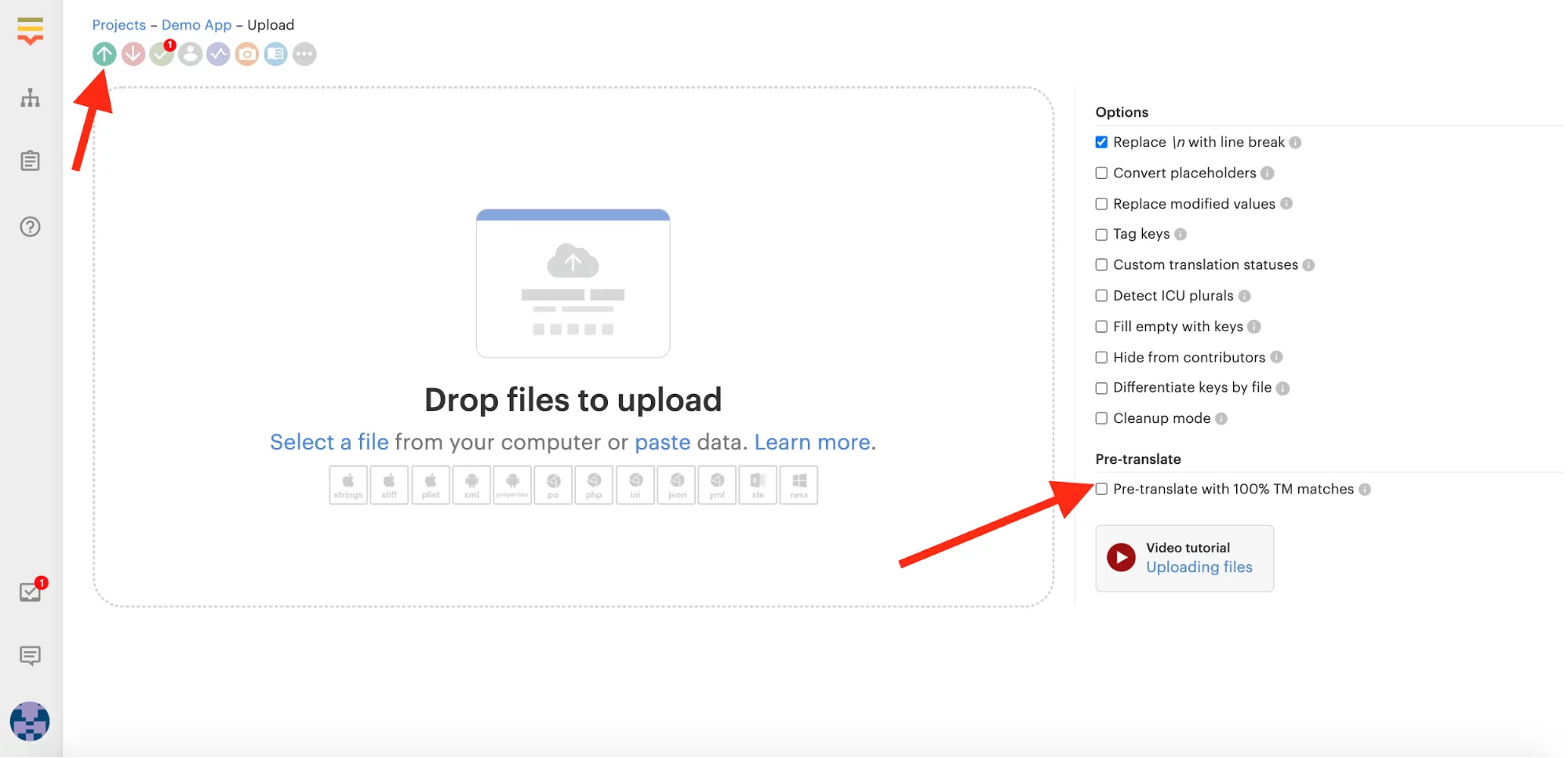
You can apply TM to multiple keys by selecting one or more translation keys. Then choose “Apply TM” to from the bulk menu. Adjust the match percentage, choose a language, and click “Apply ”.
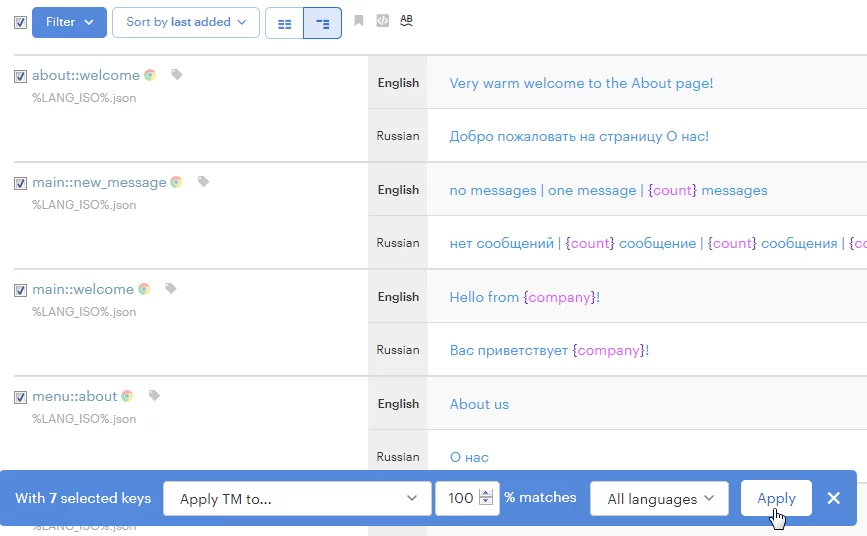
Ensuring consistency with translation memory
To manage translation memory (.tmx) files, team administrators can go to the team settings under the Translation Memory tab:
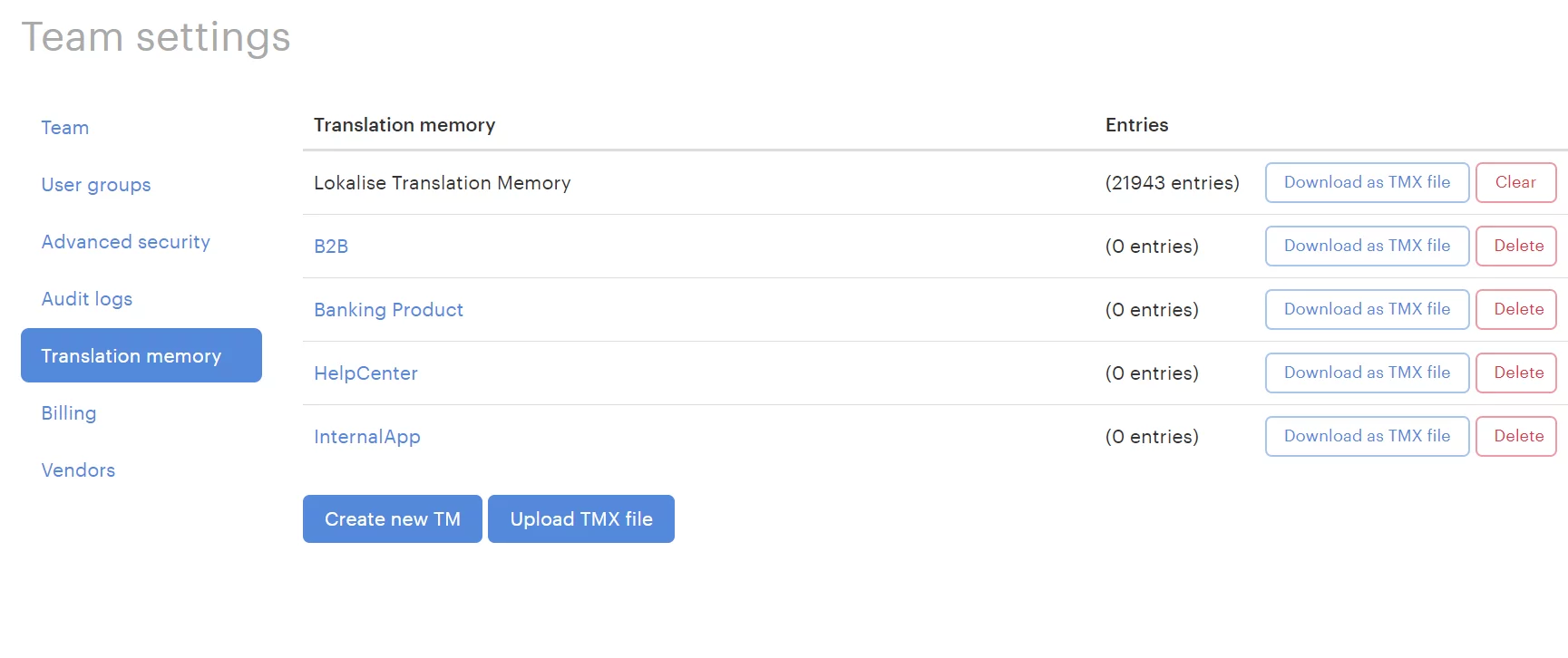
This way, you can export your translation files from another tool like Wordfast, SDL Trados Studio, or Metatexis, and turn your .docx or .pdf files into .tmx files, which can then be uploaded into Lokalise’s system.
For your projects, it may help to set up separate translation memories so you can establish different styles, tones, voice, or industry-specific terms based on your website or product architecture. That way, you don’t have to worry about your more technical content in your help center getting confused with marketing language or step-by-step directions in other parts of your software application.

In the example above, you see the “B2B” and “HelpCenter” databases are selected. When this is selected, you’ll only see suggestions from those two translation memory databases.
Similarly, you can choose a target location where you can save your new strings to your translation memory, so you can easily export it.

Lokalise = translation memory software + much more
Lokalise translation memory isn’t just beneficial to translators or translation agencies — it’s also an asset to your product, engineering, design, and marketing teams.
With Lokalise, you can:
- Recycle translations you’ve used before with translation memory, and save time and money
- Stay flexible and unattached to one technological solution, easily exporting and importing your translation memory databases
- Access and update your TM in real-time, giving you transparency and control of your assets
But that’s just the tip of the iceberg. Lokalise is the all-in-one translation management software that can make your life a lot easier.
Automate processes, eliminate routine tasks, and track progress with ease. Why wait? Try Lokalise now for 14 days.



